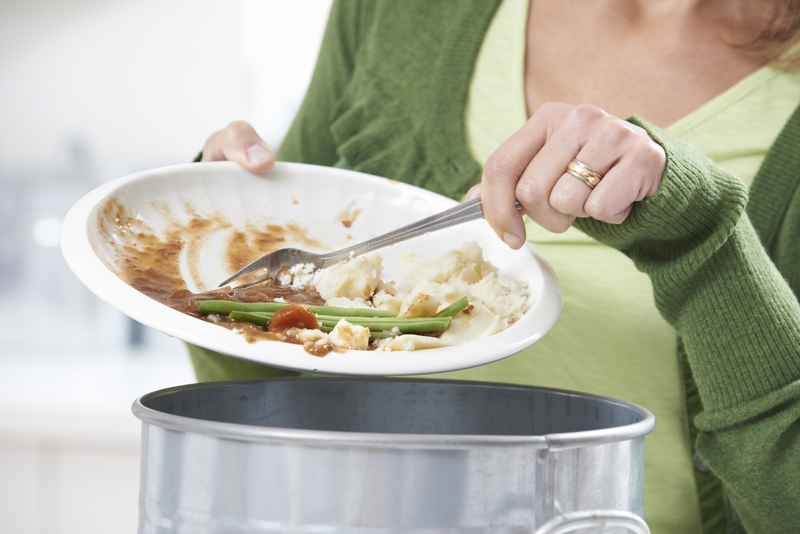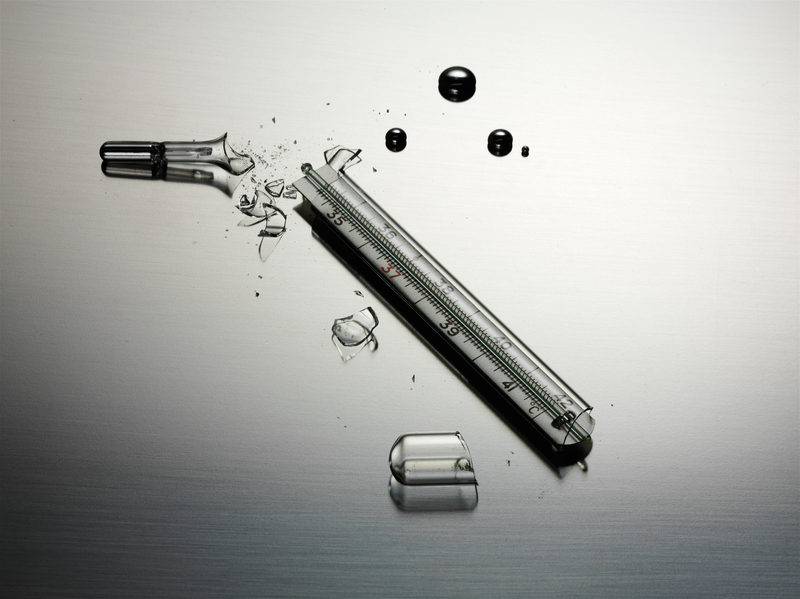Microplastic Pollution: Can We Change the Tide?
Microplastic pollution is rapidly becoming one of the most pressing environmental issues of our time. As scientists and environmentalists scramble to find solutions, the question arises: Can we really change the course of microplastic contamination in our world? In this comprehensive article, we will explore the sources of microplastic pollution, its impact, current innovations addressing the problem, and future prospects for cleaning up microplastics.
What Are Microplastics?
Before we can solve the problem, we need to understand exactly what microplastics are. Microplastics are tiny plastic particles smaller than 5 millimeters in size--roughly the size of a sesame seed or smaller. They come in two major forms:
- Primary microplastics: These are manufactured small, such as microbeads in cosmetics, industrial abrasives, and pre-production pellets (nurdles).
- Secondary microplastics: These are formed from the breakdown of larger plastic items, such as water bottles, shopping bags, or synthetic fabrics. Sunlight, wind, and wave action cause these plastics to fragment into smaller and smaller pieces.
Once in the environment, microplastics are nearly impossible to remove. This makes their environmental impact particularly challenging to address.

Major Sources of Microplastic Contamination
Everyday Products and Practices
Many people are surprised to learn that microplastic pollution often begins at home. Some common sources include:
- Washing synthetic textiles such as polyester or nylon, which releases microfibers into wastewater.
- Personal care products containing microbeads, such as exfoliating scrubs or toothpaste.
- Automobile tire wear, which produces tiny synthetic particles that wash into storm drains.
- Fragmentation of plastic packaging and single-use plastics, such as bags and bottles.
Industrial Sources
Manufacturing and shipping industries also contribute to the issue:
- Release of nurdles during plastic manufacturing and transportation.
- Spray paints and other coatings used in construction and ship maintenance.
How Do Microplastics Enter Our Ecosystems?
Microplastics are pervasive in the environment because they are so small and light. They are carried by wind, rivers, and oceans, reaching even the most remote corners of the globe. Here's how they infiltrate different ecosystems:
- Rivers and lakes: Urban stormwater runoff carries plastics from city streets into freshwater sources.
- Oceans: Marine microplastic pollution originates from various land-based and sea-based activities, including littering and fishing.
- Atmosphere: Microscopic plastic fibers are dispersed in the air and eventually settle in soil or water bodies.
Why Is Microplastic Pollution a Serious Problem?
Research has uncovered numerous risks associated with microplastic contamination that affect wildlife, ecosystems, and human health. Some of the most pressing concerns include:
Impacts on Marine Life
- Ingestion: Many aquatic organisms, from plankton to whales, accidentally ingest microplastic particles, mistaking them for food. This can cause starvation, reduced growth, and reproductive issues.
- Bioaccumulation: Microplastics can absorb toxic chemicals. When consumed by marine life, these chemicals move up the food chain, ultimately reaching humans.
Human Health Risks
- Presence in food: Microplastics have been found in seafood, table salt, honey, and even bottled water.
- Potential toxic effects: Although research is ongoing, there are concerns that microplastics and the chemicals they carry may cause inflammation, disrupt hormones, or lead to other unknown health problems.
Environmental and Socioeconomic Consequences
- Ecosystem disruption: The presence of microplastics can alter soil and water quality, influencing plant and animal populations.
- Economic losses: Industries such as fishing and tourism suffer when beaches and marine environments are contaminated with plastic pollution.
Confronting the Tide: What Is Being Done About Microplastic Pollution?
Researchers, governments, industries, and individuals are increasingly recognizing the need for urgent action. A multipronged approach is crucial to reducing microplastic pollution worldwide. Here are some of the most promising efforts underway:
Innovative Technologies for Microplastics Removal
- Advanced filtration systems: New filters for wastewater treatment plants are being installed to capture microplastics before water is released into the environment.
- Ocean cleanup devices: Organizations like The Ocean Cleanup are deploying large-scale systems to collect plastic debris and, by extension, microplastics from rivers and the seas.
- Artificial intelligence and robotics: Cutting-edge sensors and robots are now being designed to detect and gather microplastics in both aquatic and terrestrial ecosystems.
Biodegradable Materials and Alternatives to Plastics
- Switch to natural fibers: Consumers are increasingly opting for clothing made from wool, cotton, hemp, and other natural materials that don't shed plastic microfibers.
- Biodegradable packaging: Companies are developing packaging that decomposes much faster in the environment, reducing the formation of microplastics.
International Regulations and Policy Shifts
- Bans on microbeads: Many countries have already banned microbeads in cosmetics and personal care products.
- National plastic policies: Governments are rolling out initiatives such as single-use plastic bans, recycling mandates, and plastic tax incentives.
- Global action: The United Nations has placed plastic pollution high on its agenda, urging a worldwide treaty to end plastic waste.
Civic Engagement and Education Campaigns
- Beach and river cleanups: Volunteer programs have scaled up to physically remove plastic waste before it becomes microplastic.
- Awareness drives: NGOs and community groups are educating the public about how everyday choices can mitigate microplastic pollution.
What Can Individuals Do to Help Tackle Microplastic Contamination?
While governments and industries play a vital role, each of us can be part of the solution. Here's how you can reduce your personal microplastic footprint:
- Choose natural fiber clothing and wash synthetic garments less frequently and more carefully; consider using laundry bags that trap microfibers.
- Avoid products containing microbeads and check the labels on your cosmetics and personal care items.
- Reduce single-use plastics: Opt for reusable bags, bottles, and containers whenever possible.
- Recycle responsibly: Proper sorting and recycling help prevent plastics from fragmenting into microplastics in landfills and nature.
- Participate in local cleanups: Community efforts make a big difference in intercepting plastic waste before it breaks down into microplastics.
Every action counts. Although the microplastics issue may seem overwhelming, collective efforts can reduce further environmental harm and drive systemic change.
The Science of Cleaning Up Microplastics
Much of the current research is focused on finding effective ways to remove existing microplastics from our water and soil. Here are some of the scientific approaches under development:
Magnetic Extraction
Some researchers are experimenting with magnetic nanoparticles that bind to microplastic particles, making them easier to remove from water with a magnet.
Bioengineering Solutions
Certain bacteria and fungi are being tested for their ability to break down plastic polymers into harmless byproducts, offering a possible natural solution to microplastic contamination.
Sediment and Soil Cleanup
Microplastics also accumulate in soil, especially near agricultural lands. Techniques such as soil washing and improved agricultural practices are being developed to minimize and remediate contamination.
Obstacles and Remaining Challenges
Despite notable progress, significant hurdles remain in the fight against microplastic contamination:
- Microplastics are extremely small, making them difficult to detect and capture in large volumes.
- Their distribution spans the entire globe, from the deepest oceans to mountaintops and remote terrestrial environments.
- Current cleanup efforts can be expensive and energy-intensive.
- Many substitutes for plastic still have environmental trade-offs, requiring careful assessment.

What Does the Future Hold? Can We Change the Tide?
As awareness of microplastic pollution grows, innovation and policies are accelerating. Will these efforts be enough to change the tide?
- The answer lies in swift, coordinated global action, combining technological innovation, regulatory frameworks, and shifts in consumer behavior.
- Collaboration across sectors - governments, businesses, scientists, and individuals - will be necessary to address legacy pollution and prevent future harm.
- Ongoing research and monitoring will help us continually adapt strategies to effectively target new and emerging sources of microplastics.
In conclusion, although microplastic pollution is a complex and daunting problem, we have the knowledge and tools to make a substantial difference. By reducing plastic use, supporting innovation, holding policymakers accountable, and spreading awareness, we can all contribute to reversing the trend of microplastic contamination. Changing the tide may not be easy, but it is possible - and our planet depends on it.
Key Takeaways
- Microplastic pollution is one of the most widespread and persistent forms of environmental contamination.
- Sources include synthetic textiles, personal care products, packaging, and industrial processes.
- Risks extend to marine life, human health, and entire ecosystems.
- Solutions involve technological innovation, better regulations, sustainable consumer choices, and public engagement.
- Everyone has a role to play in reducing microplastic pollution and supporting a shift toward a safer, cleaner environment.